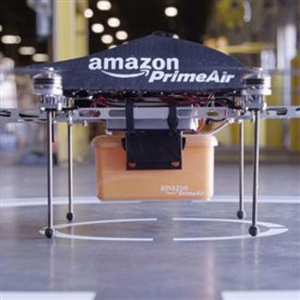 Following on from Jonathan Webber’s presentation entitled “Looking from a Safe Distance” were you convinced by the use cases for civilian unmanned aerial vehicles (UAV)? Like Jonathon I’m still rather sceptical about mass delivery from the likes of Amazon, but that was certainly headline grabbing and generated some highly amusing cartoon images. However, the use UAVs for industrial inspection, emergency services and remote monitoring already appear well developed. It’s also going to be interesting to see how things pan out with regards to the use of drones to provide internet to the unconnected. Will they make satellites redundant for communication? Can you think of additional use cases?
Following on from Jonathan Webber’s presentation entitled “Looking from a Safe Distance” were you convinced by the use cases for civilian unmanned aerial vehicles (UAV)? Like Jonathon I’m still rather sceptical about mass delivery from the likes of Amazon, but that was certainly headline grabbing and generated some highly amusing cartoon images. However, the use UAVs for industrial inspection, emergency services and remote monitoring already appear well developed. It’s also going to be interesting to see how things pan out with regards to the use of drones to provide internet to the unconnected. Will they make satellites redundant for communication? Can you think of additional use cases?